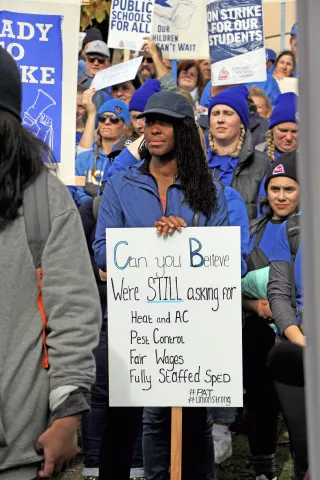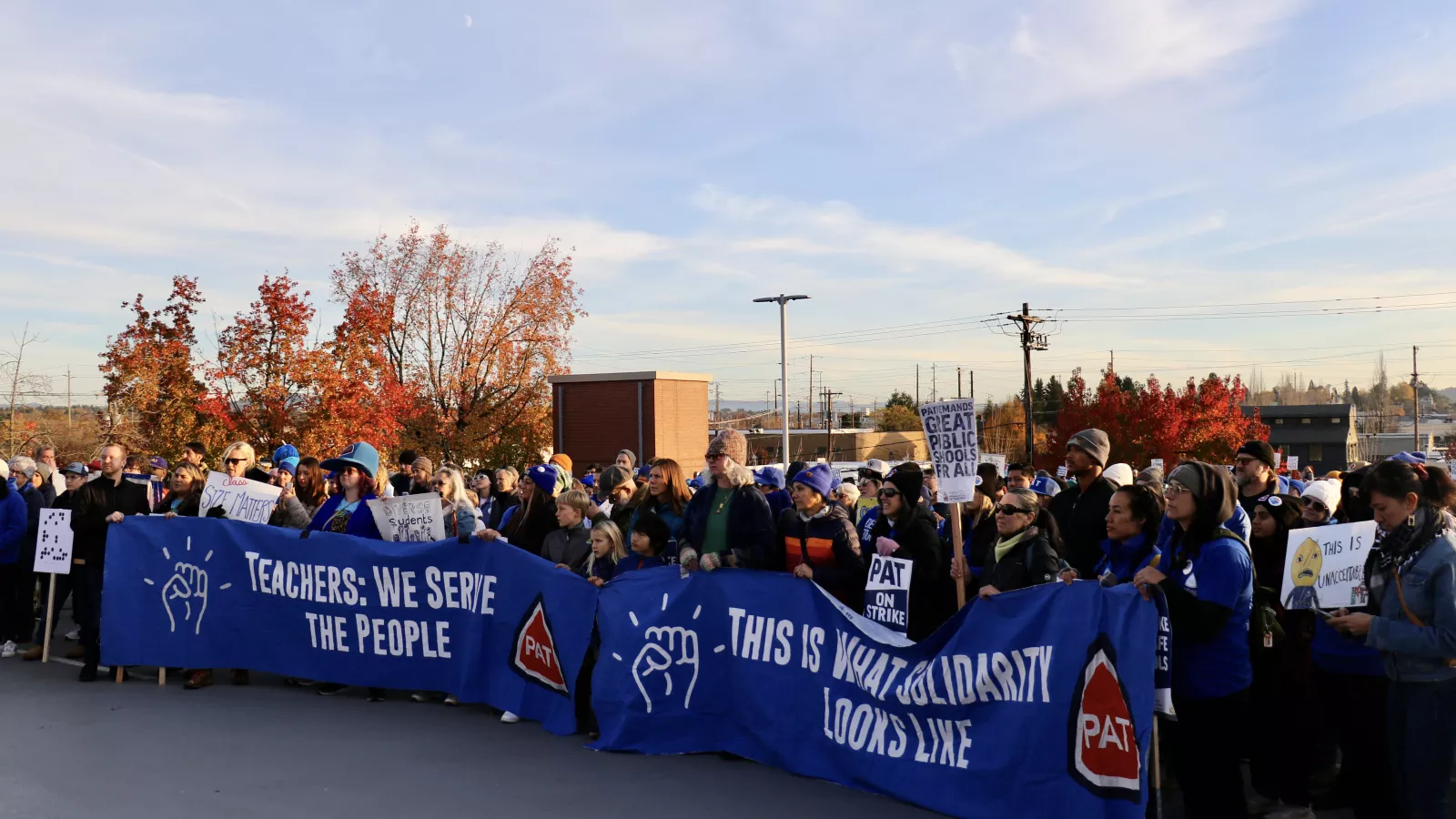The fifteen-day Portland Association of Teachers (PAT) strike that took place in November 2023 was the first strike within OEA since the Medford Teacher’s eleven-day strike in February of 2014. In striking, PAT won the largest cost of living increase in the local's history, and critical gains in class size, special education and building safety contract language. Equally crucial, the strike shifted the narrative about public school funding in Oregon and demonstrated the willingness of educators and the broader community to fight collectively for great public schools.
While some districts in Oregon have had more stability than others, a powerful strike effort in our state’s largest district proved that all is not well. The state is not funding schools at a rate that provides compensation that keeps pace with inflation. Facilities are unsafe and crumbling. Funding for supports for students who require Special Education services is woefully inadequate.
“We do not have a quality education system in our state because we’re not funded that way,” PAT President Angela Bonilla recently told Oregon Public Broadcasting. “And I think our strike helped really open not just the eyes of our families … but also the public.”
During the strike, Governor Tina Kotek made promises to change the conversation around public education in Oregon , and called for updates to Oregon’s education funding model, additional supports for the social-emotional needs of students, and increased transparency in district budgets.

In July 2024, Governor Kotek convened a working group that included OEA and other education stakeholders to discuss how the state calculates the Current Service Level (CSL) budget number. The CSL is the amount of funding the state estimates would be needed for districts to continue providing their current level of services to the students they educate.
Because of the increased public awareness around this issue caused by the strike, and with additional advocacy from members across the state, we secured an update to the CSL formula to better reflect the actual budgets of our neighborhood public schools. The new calculation will use actual budget data, not estimates, to determine recommended funding levels in the state budget.
“Folks think about schools as just being an issue that matters to parents and students, but really, it’s an issue that impacts everyone,” Bonilla said. “If we can’t provide a safe and equitable and sustainable education to students, and those same things as working conditions for educators, those are the kids that end up falling through the cracks. Those are the humans that we see on the street. Those are the humans that need more support. We are that first touchstone to intervene and provide that support,” she said.
This change means that when budget conversations begin during the upcoming Legislative session, there will be at least an additional $515 million included in the baseline calculation for education funding – a significant investment in our K-12 public schools.
“We are the canary in the coal mine when it comes to education funding and labor relations in the state,” Bonilla told OPB. “This was the start of a new chapter and a step in a process that is going to inform our legislature, and … the state as a whole, that this is a broken system.
“It cannot, and it will not stand as it is,” she said. “And folks are going to do radical things in order to get change.”
